
You should pick up a boneless lamb tenderloin when you see one, because you won't see this cut often. The lamb tenderloin sits right next to the top loin -- the two muscles that make up lamb chops -- so you rarely see them by themselves. Tender lamb tenderloin fillets require a gentle cooking technique to maintain their delicate flavor, and nothing fits better than searing and spoon-basting. The searing and spoon-basting technique combines the browning effect of sauteing with the flavor you get from basting with pan drippings.
Step 1
Remove the tenderloin fillets from the refrigerator and let them reach room temperature in a shallow dish. Lamb fillets need high heat to sear properly. Placing cold fillets in a hot pan lowers the temperature of the oil too much, too fast, and interrupts the searing process.
Step 2
Pat the fillets dry with a paper towel and season them to taste with kosher salt and freshly ground black pepper. Using only salt and pepper preserves the delicate flavor of the tenderloin.
Step 3
Pour a few tablespoons of flavorless oil, such as sunflower or canola oil, in a heavy-bottomed saute pan and swirl it to coat. Stainless steel pans work best, because they retain heat well, but you can also use a nonstick saute pan.
Step 4
Place a sprig or two of a fresh herbs, such as thyme or rosemary, in the pan. The oil releases the herbs' flavors, which flavor the lamb as it cooks.
Step 5
Set the stove to medium-high and let the oil heat for about five minutes, or until it appears to shimmer in the pan. The shimmering lets you know it's hot enough.
Step 6
Place the lamb fillets in the pan, spacing them about 1 inch apart. Don't overcrowd the pan, or it will take the oil too long to heat back up, which prevents a good sear.
Step 7
Sear the lamb fillets two full minutes and tilt the saute pan towards you slightly, still keeping the edge of it on the burner. You want to tilt it just enough for the oil to collect at the bottom where you can spoon it up.
Step 8
Spoon the hot oil up and pour it over the top of the fillets. Spoon-basting helps the fillets cook evenly, and keeps them covered in the herb-infused oil.
Step 9
Cook the fillets another three minutes, which makes five minutes total. Turn the filets over with tongs and sear the other side for two full minutes. Tilt the pan towards you again, and spoon-baste the other side of the fillets a few times.
Step 10
Cook the lamb fillets for five minutes, bringing the total cooking time to 10 minutes. The lamb fillets are medium-rare to medium after 10 minutes of total cooking, depending on their thickness. If you want the lamb well-done, lower the heat to medium and cook the fillets another four or five minutes.
Step 11
Remove the fillets and place them on a plate. Cover the lamb fillets loosely with aluminum foil and let them rest for 12 to 15 minutes before serving.
Related Articles

How to Cook Swai With Breading
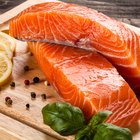
How to Cook Seasoned Keta Salmon
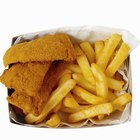
How to Fry Mullet
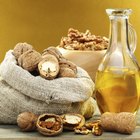
Substitutes for Walnut Oil
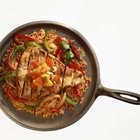
How to Pan Cook Shark
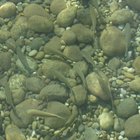
How to Cook Sauteed Perch Fillets
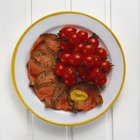
How to Cook a Tender Top Sirloin Roast
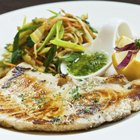
How to Cook Swordfish on a Plank

How to Pan-Sear Swordfish
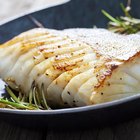
How Do I Pan Fry Fresh Fish With a ...
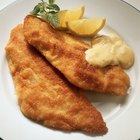
How to Deep Fry Haddock Fish
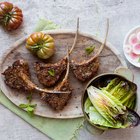
How to Grill Rack of Lamb
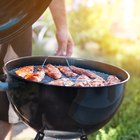
How to Cook Cobia

How to Cook Filet of Branzino
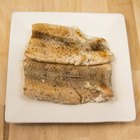
How to Cook Salmon Fillets on the Stove ...

How to Cook Axis Deer Steaks

How to Cook a Breaded Thick Cube Steak
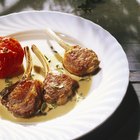
How to Make Perfect Lollipop Lamb Chops
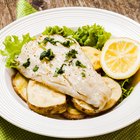
How to Cook a Turbot in the Oven

How to Clean Mullet
References
Tips
- You can also grill boneless lamb fillets, but the smokiness often covers up their flavor. If you want to grill lamb fillets, cook them over medium heat for 10 minutes on each side for medium-rare to medium.
Writer Bio
A.J. Andrews' work has appeared in Food and Wine, Fricote and "BBC Good Food." He lives in Europe where he bakes with wild yeast, milks goats for cheese and prepares for the Court of Master Sommeliers level II exam. Andrews received formal training at Le Cordon Bleu.
Photo Credits
John Foxx/Stockbyte/Getty Images